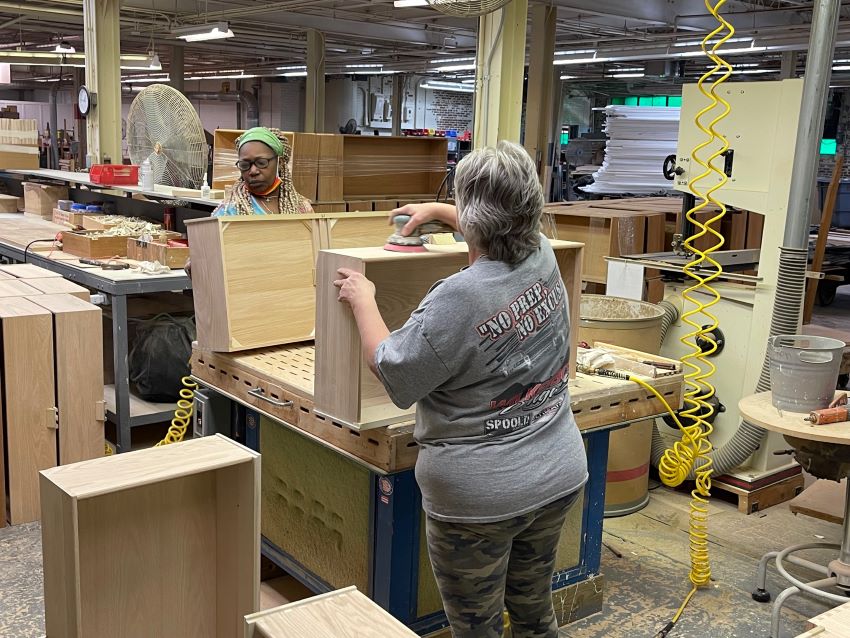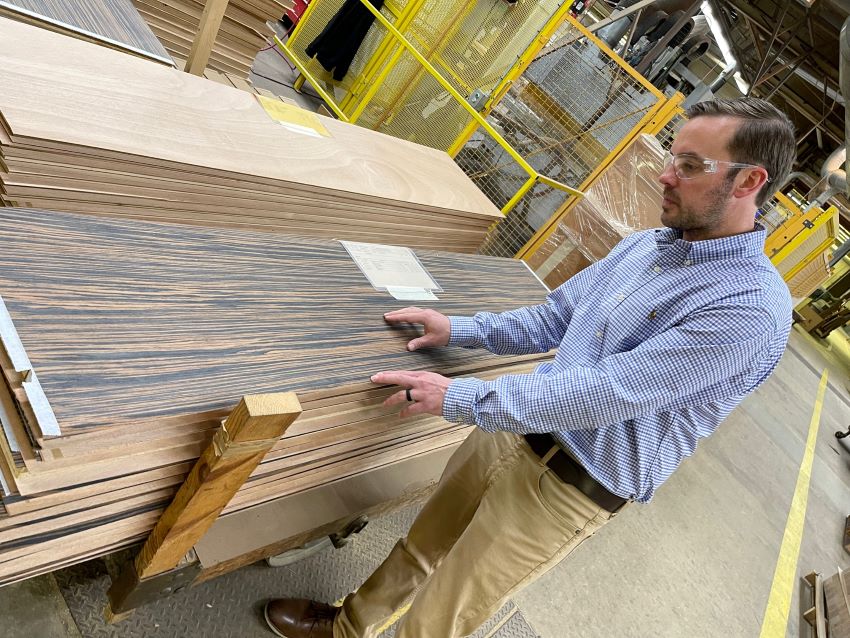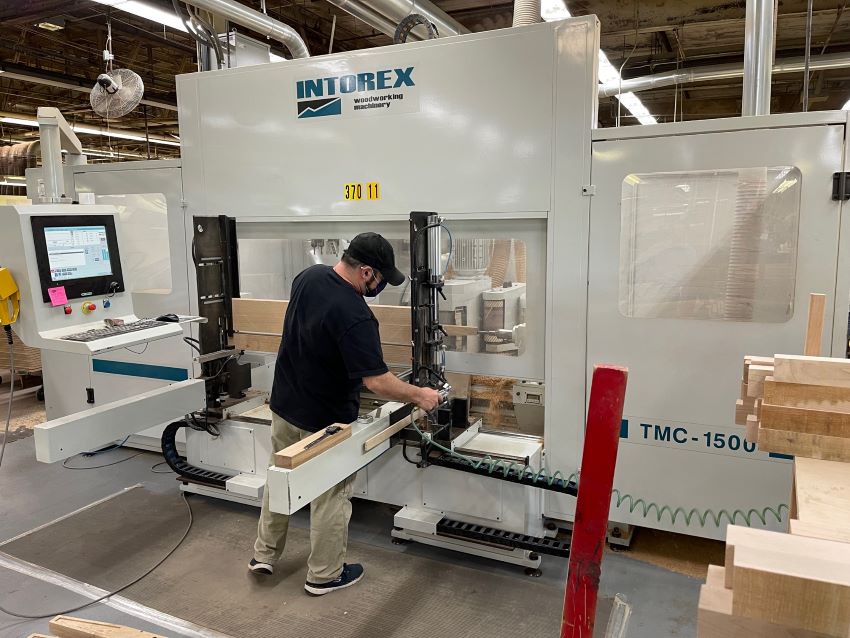Luxury case goods manufacturer chips away at backlog to help improve its speed of delivery
HICKORY, N.C. – For much of the pandemic, Century Furniture’s case goods plant here has been running at full capacity thanks to the surge in business not uncommon in the furniture industry.
But the increase in business — in the double digits over the past couple of years — has been a challenge nonetheless.
In early March when Home News Now visited its 725,000-square-foot facility in Hickory, the demand had resulted in backlogs as high as 18 weeks for its custom Details program. This has since lowered to about 10-12 weeks, which is still higher than a more typical 4-6 weeks prepandemic.

“Four to six weeks was more the norm for any custom made case goods,” said Chad Phillips, director of case goods at Century. “That goes back 10 years of that being the case. It has just slowly increased.”
Phillips said a slowdown could rear its head in the summer months, which could naturally further lower lead times in the process. But so far it hasn’t been noticeable enough to create any major concern.
In fact, he noted, if orders stopped in their tracks for a period of time, there would still be enough business to carry the company for several months if not longer based on the rate of sale of late.
“We really haven’t seen any real signs of slowing down,” he said, noting that there haven’t been any drop in orders in recent weeks. “We might have a slow week where we think something might be happening, and then it fires back up the next week with record numbers. I don’t think it’s going to last forever…that’s just a feeling. But I think with our backlog we are in a healthy position for sure.”
Still, the company is working to get product to customers more quickly. During the same visit, company CEO Alex Shuford III told Home News Now company parent Rock House Farm was taking steps to do so, most notably by reducing the number of slow performing SKUs across its brands to focus on higher selling items that don’t require workers to have to relearn the basic steps of how to make a particular piece.
“If you are running a best-seller through your production facility, you can probably make 15-20% more of those on a weekly basis than if you are running the same number of people on a bunch of slow selling items,” Shuford said. “And that is because they don’t remember how to make it – they have to slow down. They have to ask for help from a supervisor.

“So we have been editing our product lines to try to push more of the incoming business to better selling products because we know we can get more through our factories. If I have a chair that I sell 500 a year and I can push that to 600 a year versus that extra hundred units spread over 50 other chairs that each sell two a year I am going to get a lot more productive capacity out of the same number of people, the same number of hours. So that has been a big part of what we have been focusing on.”
But the company is also actively recruiting new associates, a challenge given that so many other companies and industries are doing the same thing right in Century’s backyard.
Employment on the case goods side has hovered around 100 of Century’s 800 workers overall, including in upholstery manufacturing, a number that goes up and down based on people coming and going. Earlier this spring, the company was looking to add another 30 to the ranks, part of an effort to help further reduce the backlog.
“You hire 20 and then you lose 20. It’s been that kind of equation the last year and a half,” Phillips said. “It’s just hard to maintain the number of people, and as people leave you tend to get a few more back. But it’s just that bounce, we are not able to get more people than are leaving – it’s just like that in our area.”
Part of the challenge in recruiting has been to get past a negative mindset people may have about working in a factory.
“There are a lot of opportunities out there, and people may not look at that,” Phillips said of working in a furniture plant. “They may not understand it, but you can make a lot of money and make a very good living in upholstery and furniture…People think ‘that’s a factory job, and I don’t want that.’ But you can really do well, and we always try to promote that in the community.”
He said that while the company has been able to hire people with experience in wood finishing, it is harder to find workers with hands-on woodworking experience.

“A lot of that skilled labor has aged out of the work force or has chosen to retire,” Phillips said.
He said that having modern equipment is helping to create interest among younger workers as they are more familiar with and comfortable with computers and automation.
“They don’t look at it as the same job maybe that their father did or their grandfather did that involved sawing or sanding wood,” he said.
While Phillips said the challenges of recruiting and retaining workers will likely remain for the foreseeable future, he noted that the company is committed to maintaining a position of strength – in quality and design – over the long term.
“I think having the background that Century has and the history that Century has and having been through the good days, the bad days and everything in between, has shown the market and our customers that we are here to stay,” Phillips said. “The resilience is there. We have been through some really tough times and have always come through it.”




